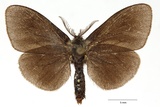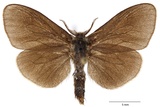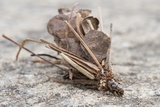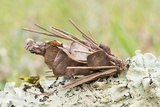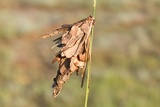Canephora hirsuta (Poda, 1761) Species
Last modified: Nov. 22, 2024, 12:59 p.m.
A very rare species in Belgium, it used to be widespread in earlier times but seems to have restricted itself to the extreme south of the country.
Details
- Classification
- Family: Psychidae > Subfamily: Oiketicinae > Tribus: Acanthopsychini > Genus: Canephora > Species: Canephora hirsuta
- Vernacular names
- Kleine reuzenzakdrager (NL), Großer Sackträger (DE)
- Synonyms
- Canephora unicolor (Hufnagel, 1766) and Canephora graminella (Denis & Schiffermüller, 1775)
- First mention in Belgium
- Fologne E., Mors L. & Weyers J. 1861. Rapport sur les excursions entomologiques faites dans la Campine anversoise. — Annales de la Société entomologique belge 5: 47–51. On page 48 (as Psyche graminella). view page
- Status
-
Native
Distribution
Bionomics
The males are active by day, the females are apterous. This species is mostly found by there larval cases.
No pictures yet!
Flight periods
One generation a year during June and early July.
Observed on
- Host plant (species):
- Ulmus glabra, Rubus fruticosus, Cytisus scoparius, Acer campestre, Hippophae rhamnoides, Salvia pratensis, Plantago major, Plantago lanceolata and Ulmus minor
- Host plant (genera):
- Crataegus and Geranium
Polyphagous on various deciduous trees, scrubs and herbaceous plants.
No pictures yet!
Habitat
Xerothermic open landscapes, meadows, road-sides, heathland, moorland, peat bogs.
No pictures yet!
